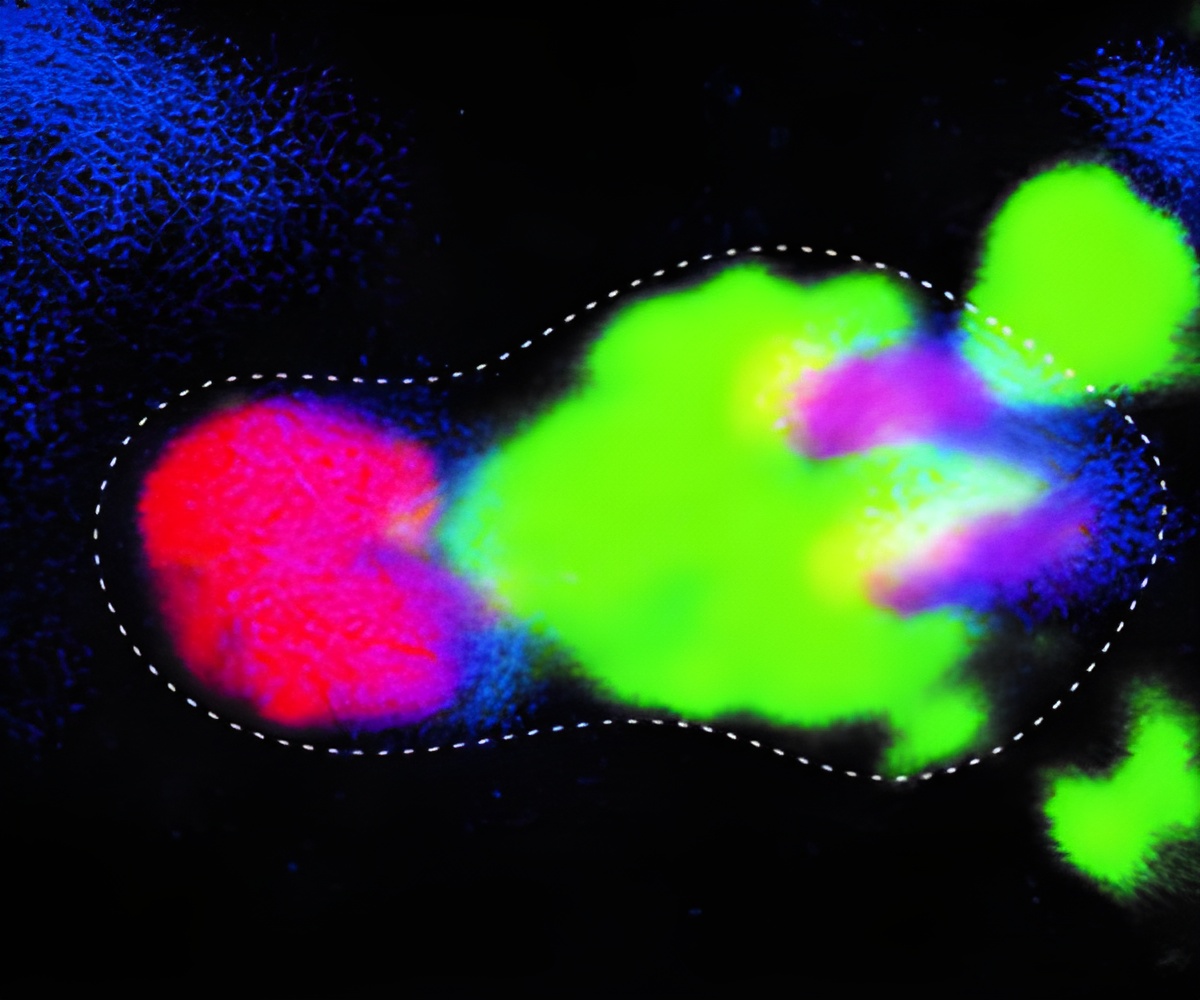The key molecule called EGFR-3, is part of a cascade of signals that seems to control the way these cells divide and differentiate in response to near-lethal levels of radiation.

‘The egfr-3 gene was required for neoblast repopulation. The gene binds with another protein called epidermal growth factor, known to stimulate growth, proliferation, and differentiation in other cell types.’





"All the genes in this signaling cascade are conserved, from planaria on up to humans. A similar process could also be taking place within our very own cells; we just don't know it," says Alejandro Sánchez Alvarado, Ph.D., an investigator at the Stowers Institute and Howard Hughes Medical Institute, who is the senior author of the study. "In fact, anything that perturbs our body - aging, injury, even a spicy meal - can affect our stem cell functions. If we understand better how planarians regulate the population dynamics of their stem cells, it may provide a clue for addressing our own pathologies."Planarians are known for their regenerative properties. When a planarium is split in the middle, two identical organisms will appear in its place. Cut a fragment 1/279th the size of the original animal and it will regenerate a complete animal. This ability originates in a special group of adult stem cells called neoblasts that are spread throughout the bodies of these freshwater worms. Studies have shown that even a single neoblast is enough to replenish the entire population of planarian stem cells.
Sánchez Alvarado wanted to pinpoint the exact signals that shaped these dramatic population dynamics. Kai Lei, Ph.D., a postdoctoral scientist in his lab, decided to go after the usual suspects - namely, the EGF, FGF, Insulin, VEGF, TGF-beta, Wnt/beta-catenin, Hedgehog, and Notch signaling pathways - that have been associated with stem cells and thus might play a role in this process.
The researchers used an advanced molecular technique called RNA interference to silence different genes in the suspected signaling pathways. The planaria were subjected to a dose of radiation that would kill most, but not all, of their resident neoblasts. Then, he waited to see how each silenced gene affected the ability of the neoblasts to recover, repopulate, and restore the survival of the irradiated animals.
The researchers found that gene egfr-3 was required for neoblast repopulation. This gene codes for a protein that sits on the surface of cells and binds another protein - called epidermal growth factor - known to stimulate growth, proliferation, and differentiation in other cell types.
Advertisement
"Even though asymmetric cell division has long been proposed to exist in planarians, our study provides the first direct molecular evidence of its existence," says Lei. He showed that when EGFR-3 was functioning normally, irradiated neoblasts divided by asymmetric cell division half of the time and by symmetric cell division the other half of the time. But when he silenced EGFR-3, asymmetric cell division was impaired.
Advertisement
"Asymmetric cell division may be a way of getting rid of the bad apples. We don't have proof yet, but we think that this signaling pathway helps to shuffle along the cells that carry defects, giving them different fates so they no longer make more stem cells (neoblasts). The prediction would be that only the cells with the best DNA get to stick around and serve as the template for future generations -- something we need to test next," said Sánchez Alvarado.
The study is published in the journal Developmental Cell.
Source-Medindia









